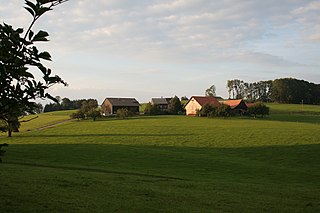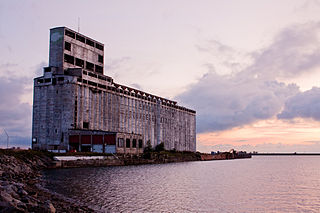
Clemenceau is a hamlet in the Canadian province of Saskatchewan named after Georges Clemenceau, the French physician, journalist and statesman. Listed as a designated place by Statistics Canada, the hamlet had a population of 10 in the Canada 2006 Census. [1]

A hamlet is a small human settlement. In different jurisdictions and geographies, hamlets may be the size of a town, village or parish, be considered a smaller settlement or subdivision or satellite entity to a larger settlement. The word and concept of a hamlet have roots in the Anglo-Norman settlement of England, where the old French hamlet came to apply to small human settlements. In British geography, a hamlet is considered smaller than a village and distinctly without a church or other place of worship.

Canada is a country in the northern part of North America. Its ten provinces and three territories extend from the Atlantic to the Pacific and northward into the Arctic Ocean, covering 9.98 million square kilometres, making it the world's second-largest country by total area. Its southern border with the United States, stretching some 8,891 kilometres (5,525 mi), is the world's longest bi-national land border. Canada's capital is Ottawa, and its three largest metropolitan areas are Toronto, Montreal, and Vancouver.

Saskatchewan is a prairie and boreal province in western Canada, the only province without a natural border. It has an area of 651,900 square kilometres (251,700 sq mi), nearly 10 percent of which is fresh water, composed mostly of rivers, reservoirs, and the province's 100,000 lakes.
Clemenceau is located on the Canadian National Railway approximately 27 kilometres (17 miles) south of Hudson Bay, Saskatchewan and by 1929 the town was one of the largest shipping points of railcar lots of lumber in the province. [2] The lumber industry was the key industry of the town, but a forest fire in 1942 seriously damaged forestry in the area. [3] In 1950, Clemenceau was one of nine provincial land settlement projects after World War II, and was primarily a resettlement block for farmers. [4]

Canadian National is a Canadian Class I freight railway headquartered in Montreal, Quebec that serves Canada and the Midwestern and Southern United States.

Hudson Bay is a town in east-central Saskatchewan, Canada near the Manitoba border. The town is surrounded by the Rural Municipality of Hudson Bay No. 394.
As of 2011, a Federal grain elevator in Clemenceau still stands adjacent to the railway. [5]

A grain elevator is an agrarian facility complex designed to stockpile or store grain. In grain trade, the term grain elevator also describes a tower containing a bucket elevator or a pneumatic conveyor, which scoops up grain from a lower level and deposits it in a silo or other storage facility.


